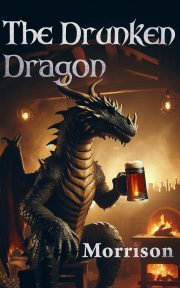The Voodoo of Research
 by Tim Susman
by Tim Susman
Since it’s fall and ghosts are in the air, I thought it might be a good time to talk about my research into vodou/voodoo, the religion and spiritual practices that coalesced on Haiti among the African slaves there and spread to America, most commonly and famously in New Orleans (for the purposes of this article, I use “vodou” to refer to the Haitian religion and “voodoo” to refer to the New Orleans practices).
I was writing “Black Angel,” a ghost story with a female protagonist, and vodou has a long tradition of powerful female figures, the most famous being Marie Laveau, who lived in New Orleans in the mid-to-late 1800s. Her grave was said to be the second most visited in the U.S. until recently (behind only Elvis).
The most important thing for me was making sure that I treated the religion with respect. That’s important for any subject, of course, but with a culture that’s been vilified and sensationalized in the media as much as voodoo has, it’s crucial to distinguish the fact from the fantasy.
I started with Wikipedia, which is (as you probably know) a good place to start your research, but not a good place to end it. Wikipedia led me to two books (New Orleans As It Was, an 1895 account by Henry Castellanos, and A New Orleans Voudou Priestess, The Legend and Reality of Marie Laveau, by Carolyn Morrow Long). I was fortunate enough to visit a traveling museum exhibit on Haitian Vodou. The best source would obviously be a current practitioner, but as I live in California, those are hard to track down. So I traveled to New Orleans, not only to get the flavor of the area, but to take a tour of haunted New Orleans that included a visit to a voodoo temple and a voodoo priestess.
At the voodoo temple, which was in the living room of the priestess’s house, we heard many things about the practice, most of which reinforced the research I’d done prior to the tour. Voodoo, like vodou, incorporates ancestors into its worship, and is a very fluid, inclusive religion (Marie Laveau included Catholic practices and reverence for the saints into her rituals). The temple looks like the storage room of a craft-focused hoarder with an eye for interior decoration, and includes not only skulls but also ceramic animals, bottles, votive candles, and a hundred other things. Every item in the temple has some kind of personal association for the priestess.
There were a few things there designed to create an effect–things that would move without being touched, things that would make noise. I tried to avoid those and asked about one painting, high up on a wall. Without hesitating, the priestess told me a story that connected that painting to her mother, who’d recently passed away at the time she found the painting.
I realize that this may be just another level of entertainment, that the priestess may be an excellent performer with material for both the tourist who accepts everything at face value and the one who thinks he’s smart because he’s read a couple books. Of course, the story was coming from someone whose job was to entertain, but it’s possible to believe in vodou and at the same time search for creative ways to entertain those with a casual interest in it. Her story matched up with the material I’d read, and I trusted the way she delivered it. In the end, you have to believe something.
The morning I was to leave New Orleans, I visited the cemetery where Marie Laveau is buried. They are now deliberately vague about which tomb is her real grave (there are two there) because people draw Xs on them to ask for a boon. The tomb itself is an interesting vodou artifact, the prayers and hopes of people directed at the spirit of a person who lived over a hundred years ago, asking her to intercede on their behalf with the gods.
Before I left, I asked for her blessing. It seemed like the polite thing to do.
•••
Tim Susman started a novel in college and didn’t finish one until almost twenty years later. In that time, he earned a degree in Zoology, worked with Jane Goodall, co-founded Sofawolf Press, and moved to California. Since publishing “Common and Precious,” he has attended Clarion in 2011 (arooo Narwolves!), published short stories in “Apex,” “Lightspeed,” and “ROAR,” among others, and recently released his Revolutionary War-era fantasy “The Tower and the Fox.” Under the name Kyell Gold, he has published multiple novels and won several awards for his furry fiction. You can find out more about his stories at timsusman.wordpress.com and www.kyellgold.com.
For a great deal on a great bundle of fantasy novels, including Black Angel by Kyell Gold, head to the SFWA Fantasy StoryBundle, curated by Cat Rambo. Less than a week remains so don’t wait! Proceeds benefit SFWA and its nonprofit mission to inform, support, promote, defend, and advocate for writers.


